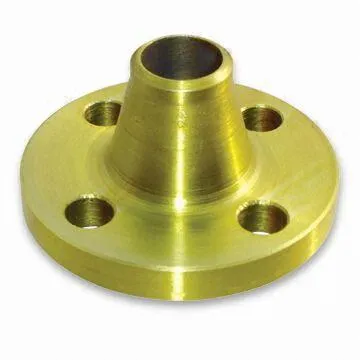-
Cangzhou Yulong Steel Co., Ltd.
-
Phone:
+86 13303177267 -
Email:
admin@ylsteelfittings.com
- English
- Arabic
- Italian
- Spanish
- Portuguese
- German
- kazakh
- Persian
- Greek
- French
- Russian
- Polish
- Thai
- Indonesian
- Vietnamese
- Zulu
- Korean
- Uzbek
- Hindi
- Serbian
- Malay
- Ukrainian
- Gujarati
- Haitian Creole
- hausa
- hawaiian
- Hebrew
- Miao
- Hungarian
- Icelandic
- igbo
- irish
- Japanese
- Javanese
- Kannada
- Khmer
- Rwandese
- Afrikaans
- Albanian
- Amharic
- Armenian
- Azerbaijani
- Basque
- Belarusian
- Bengali
- Bosnian
- Bulgarian
- Catalan
- Cebuano
- China
- China (Taiwan)
- Corsican
- Croatian
- Czech
- Danish
- Esperanto
- Estonian
- Finnish
- Frisian
- Galician
- Georgian
- Kurdish
- Kyrgyz
- Lao
- Latin
- Latvian
- Lithuanian
- Luxembourgish
- Macedonian
- Malgashi
- Malayalam
- Maltese
- Maori
- Marathi
- Mongolian
- Myanmar
- Nepali
- Norwegian
- Norwegian
- Occitan
- Pashto
- Dutch
- Punjabi
- Romanian
- Samoan
- Scottish Gaelic
- Sesotho
- Shona
- Sindhi
- Sinhala
- Slovak
- Slovenian
- Somali
- Sundanese
- Swahili
- Swedish
- Tagalog
- Tajik
- Tamil
- Tatar
- Telugu
- Turkish
- Turkmen
- Urdu
- Uighur
- Welsh
- Bantu
- Yiddish
- Yoruba

Jul . 28, 2024 17:25 Back to list
Understanding Schedule 40 Specifications for Welded Pipe Fittings and Their Applications in Plumbing
Understanding Schedule 40 Welded Pipe Fittings
In the world of plumbing and industrial construction, the importance of using the right materials can’t be overstated. Among the various types of pipes and fittings available in the market, Schedule 40 welded pipe fittings hold a prominent place due to their reliability, affordability, and widespread usage across multiple applications.
What Is Schedule 40?
Schedule 40 refers to the thickness of the walls of pipes and fittings. The term schedule is a standardized method used to indicate the wall thickness of a pipe; the larger the schedule number, the thicker the pipe wall. Schedule 40 is often seen as a medium thickness option, making it suitable for various uses, including residential plumbing and commercial applications. This specification ensures that Schedule 40 pipes can withstand a considerable amount of pressure, up to 280 PSI in some cases, depending on the pipe's diameter and the material used.
Characteristics and Materials
Schedule 40 welded pipe fittings are commonly made from materials such as PVC, CPVC, and carbon steel. The choice of material depends largely on the application, temperature, and pressure requirements
1. PVC (Polyvinyl Chloride) Known for its lightweight and corrosion-resistant properties, PVC Schedule 40 fittings are typically used in water supply systems, pools, and irrigation. They’re ideal for applications with lower pressure and temperature.
2. CPVC (Chlorinated Polyvinyl Chloride) Similar to PVC but can withstand higher temperatures of up to 200°F, CPVC Schedule 40 fittings are commonly used for hot water applications in residential and commercial plumbing systems.
3. Carbon Steel For heavier-duty applications that require greater strength and durable performance, Schedule 40 carbon steel fittings are employed. These are often used in industrial settings and oil and gas pipelines where pressure needs are significantly higher.
Advantages of Welded Fittings
Welded pipe fittings, as the name implies, require welding for joining pipes together
. This process has several advantagesschedule 40 welded pipe fittings

- Enhanced Strength Welded joints offer a continuous and robust connection that can handle high pressure and stress better than other joining methods like threaded or slip fittings.
- Leak Resistance Welded fittings provide a secure seal that minimizes the risk of leaks, making them suitable for high-stakes environments, such as chemical processing plants and petroleum refineries.
- Versatility Welded pipe fittings can be produced in various sizes and shapes, including elbows, tees, caps, and reducers, allowing for flexibility in design and installation.
Applications of Schedule 40 Welded Pipe Fittings
The applications of Schedule 40 welded pipe fittings are vast and varied
- Water Supply Systems Commonly used in residential water distribution systems, providing reliable connections between various pipe segments.
- Industrial Processes Found frequently in factories and process plants where they are crucial for transporting fluids and gases under pressure.
- Hydraulic Systems Often used in hydraulic applications due to their ability to withstand high pressures.
- Construction and Infrastructure Essential in civil engineering projects, including drainage systems and road construction where durable and lasting connections are a must.
Conclusion
In conclusion, Schedule 40 welded pipe fittings are an integral part of modern plumbing and industrial applications. Their combination of strength, durability, and versatility makes them a preferred choice among engineers and contractors alike. Understanding their specifications and applications can significantly contribute to the success and safety of any plumbing or construction project. As industries continue to evolve, Schedule 40 fittings will undoubtedly remain a critical component in the infrastructure that supports our daily lives.
Latest news
-
ANSI 150P SS304 SO FLANGE
NewsFeb.14,2025
-
ASTM A333GR6 STEEL PIPE
NewsJan.20,2025
-
ANSI B16.5 WELDING NECK FLANGE
NewsJan.15,2026
-
ANSI B16.5 SLIP-ON FLANGE
NewsApr.19,2024
-
SABS 1123 FLANGE
NewsJan.15,2025
-
DIN86044 PLATE FLANGE
NewsApr.19,2024
-
DIN2527 BLIND FLANGE
NewsApr.12,2024
-
JIS B2311 Butt-Welding Fittings LR/SR 45°/90° /180°Seamless/Weld
NewsApr.23,2024











